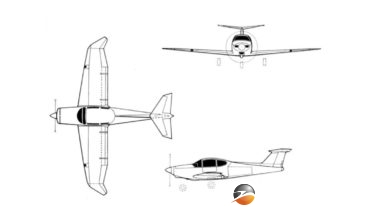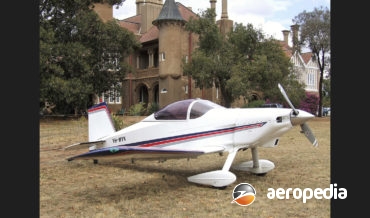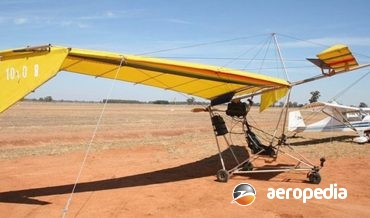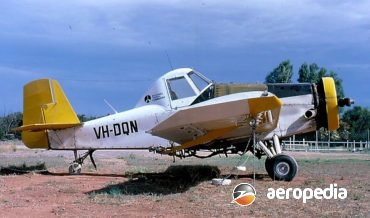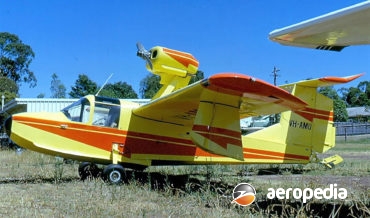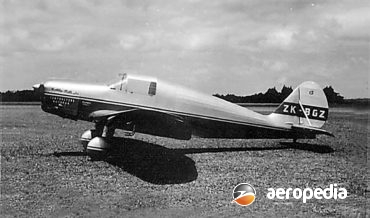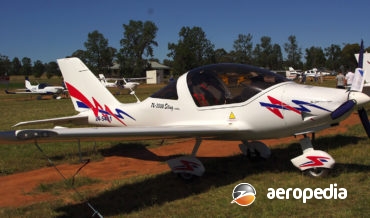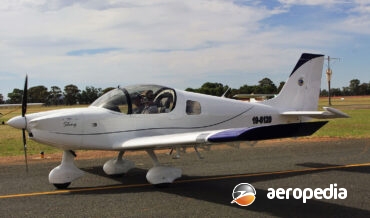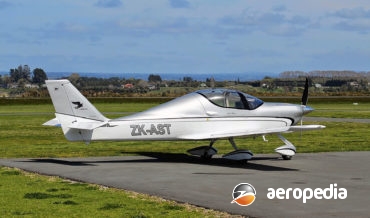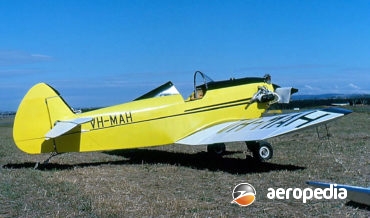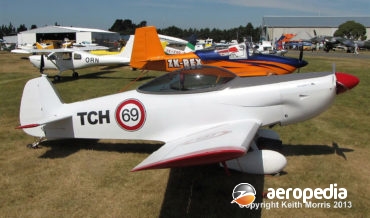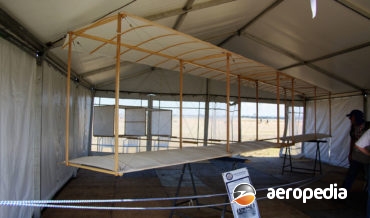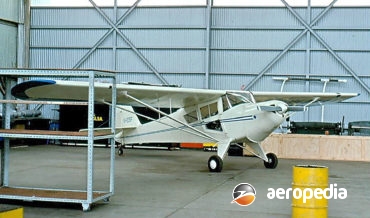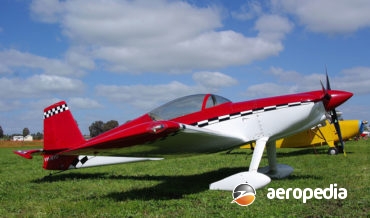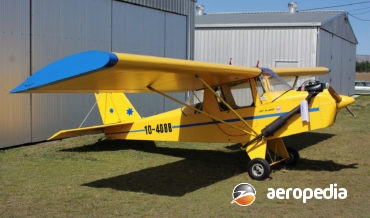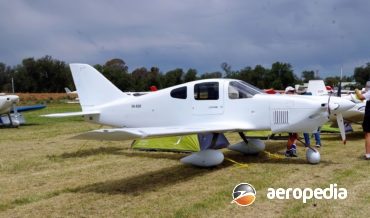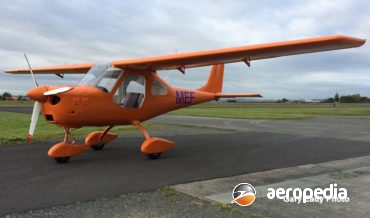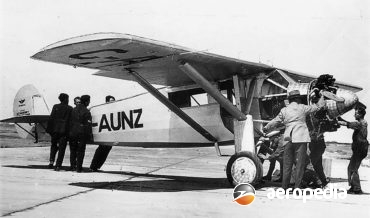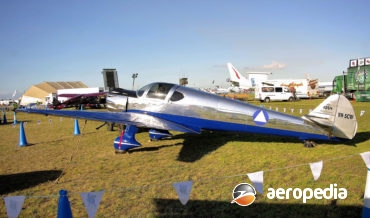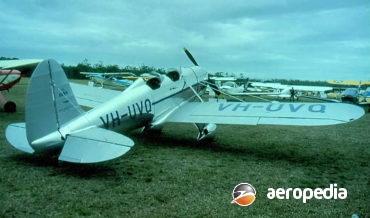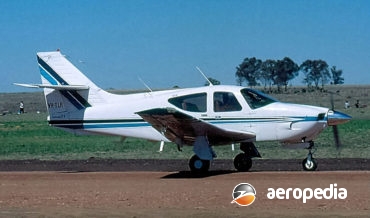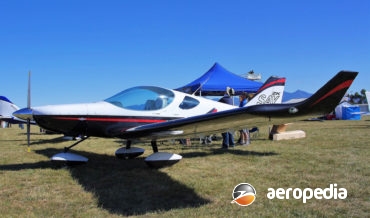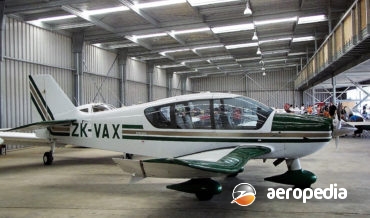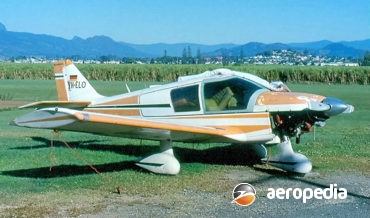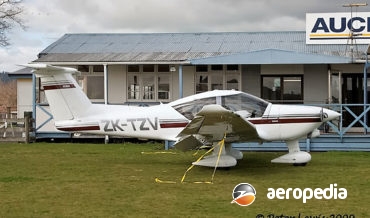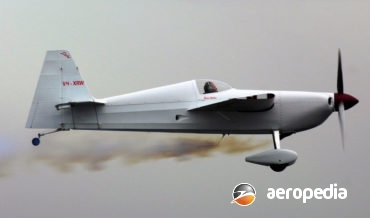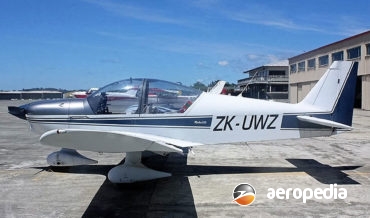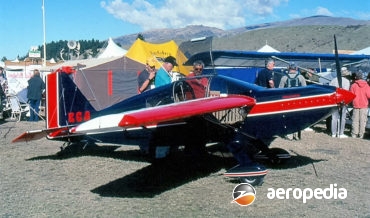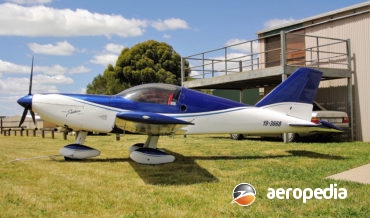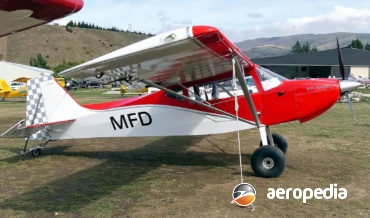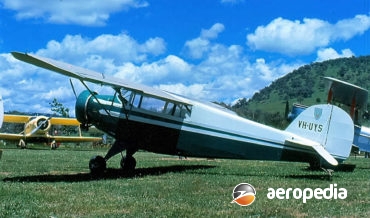All Contents
Contents
The PL-13 was one of the many designs by the profilic designer, Luigi Pellarini and was a four-seat monoplane.
David C. Eyre
- May 8, 2019
Designed by John Thorp in the USA, the T-18 has been one of the most popular home-built light aircraft for amateur construction, hundreds having been built around the world.
David C. Eyre
- May 8, 2019
The Thorp T-111 Sky Skooter was designed by John W Thorp as a development of his earlier design, the Little Dipper. The prototype was flown on 15 August 1946 powered by a 48-kw (65-hp) Lycoming engine and early production machines were produced by Thorp Engineering. Occasionally modifications were made to
David C. Eyre
- May 8, 2019
The Pegasus is a single engine high-wing monoplane with hybrid control, the wing having a swept back leading edge and a tapering chord. It has a canard wing and no tail.
David C. Eyre
- May 8, 2019
The prototype of the S2 series was flown for the first time in 1956. Designed by Leland Snow, who founded the Snow Aeronautical Company (later Corporation), the type has proved to be very successful in its role as an agricultural aircraft over the years.
David C. Eyre
- May 8, 2019
The Teal amphibian was designed by David Thurston at Sandford in Maine, USA as a two-seat light amphibian for the sportsman pilot. It was fitted with a 112-kw (150-hp) Lycoming engine and a T-tail.
David C. Eyre
- May 8, 2019
Ernest Oscar Tips was the chief designer of Avions Fairey SA in Belgium in the 1930s, designing and building his first aircraft, the Tipsy S.1, a single-seat ultra light, in the company’s works at Gosselies, Belgium in 1935.
David C. Eyre
- May 8, 2019
The TL Sting series of light aircraft is manufactured as a type certified ultralight aircraft in the Czech Republic and has been available in Australia in a number of models for some years.
David C. Eyre
- May 8, 2019
The Viper SD-4 is a two-seat light sporting low-wing monoplane with a fixed tricycle undercarriage designed and produced in Slovakia. Design work commenced in 2004, the prototype flying for the first time on 1 November 2006 and it entered production in 2008.
David C. Eyre
- May 8, 2019
The Bravo was a development by the Italian manufacturer of the popular series of light aircraft to meet the United States Light Sport Aircraft (LSA) class of flying machine as defined by the Federal Aviation Administration.
David C. Eyre
- May 8, 2019
Built by The Airplane Factory at Tedderfield at Johannesburg in South Africa, the company produces two designs, the Sling 2, which is available as a GA aircraft with an all-up weight of 700 kg, but 600 kg ( l lb) if registered under LSA Regulations; and the Sling 4, the
David C. Eyre
- May 8, 2019
Costruzioni Aeronautiche Tecnam of Capua in Italy has for some years developed and produced a range of light aircraft for the sports pilot and a new aircraft was announced in 2013 known as the Astore (Goshawk), the prototype of which flew for the first time at Naples in June 2013,
David C. Eyre
- May 8, 2019
The Tecnam 2002 series was introduced to the Company’s line in 2004, being described as designed and built in the 21st Century, this is the standard all GA trainers should attain.
David C. Eyre
- May 8, 2019
The Taylor JT-1 monoplane was designed in the United Kingdom in the 1950s by the late John Taylor. He built the prototype with the object of producing an airframe for not more than £100 Sterling.
David C. Eyre
- May 8, 2019
The Taylor Titch, like the Taylor Monoplane, was designed by the late Mr John Taylor in the United Kingdom and was designed to improve on the basic design of the JT.1 but not to replace that aircraft as the aerodynamic characteristics of the two were different.
David C. Eyre
- May 8, 2019
The Mini-Imp was one of a number of designs developed by well-known American designer, Molt Taylor. Taylor was born in Portland, Oregon and was known for designing a number of interesting aircraft, including the XLRQ-1 amphibious assault glider, the Coot and others.
David C. Eyre
- May 8, 2019
In the 1890s George Augustine Taylor (1872 - 1928) became interested in aviation and, with the assistance later of Lawrence Hargrave, experimented with gliders.
David C. Eyre
- May 8, 2019
The F-21B was a new production aircraft produced by a company called Taylorcraft in the USA and was a development of the Taylorcraft series of aircraft produced in the 1930’s and ‘40s.
David C. Eyre
- May 8, 2019
The Team Rocket is a light high-performance kit-built monoplane produced by Team aircraft of Taylor Texas.
David C. Eyre
- May 8, 2019
The Hi-MAX is one of a series of ultra-light aircraft designed to be built by amateur builders and to be registered under ultra-light regulations.
David C. Eyre
- May 8, 2019
The Foxtrot 4 light high-performance sporting and touring monoplane was developed by Team Tango, a company based at Williston, Florida, and owned by Revolution Aviation Inc.
David C. Eyre
- May 8, 2019
The TechPro Merlin dates back to 2011 when the first prototype flew, the supply of kits commencing in 2015. Three variants are available, the Merlin 100UL with a tricycle undercarriage or a tailwheel, first flown in April 2012 and aimed at the Federation Aeronautique International microlight class.
David C. Eyre
- May 8, 2019
The Ryan Brougham series was the first real attempt by the Ryan Aircraft Corp to produce a light commercial transport, and the type became famous when a variant, known as the Ryan NYB (NX211) was used by Charles Lindberg to fly the Atlantic in May 1927 in 33 ½ hours.
David C. Eyre
- May 8, 2019
In August 1937 the Ryan Aeronautical Company rolled out a new design, the SC series being a Sport Coupe of all metal construction.
David C. Eyre
- May 8, 2019
The Ryan Aeronautical Company was a successor to the Ryan Company which produced the Ryan Brougham, the type used by Charles Lindbergh in his Atlantic crossing, and a few examples of which were registered in Australia in the 1930s.
David C. Eyre
- May 8, 2019
Over the years the early variants of the Model 112 were perceived as under-powered and had limited load capability and the manufacturer addressed these problems in November 1975 with the Model 114, of which more than 1,100 were delivered.
David C. Eyre
- May 8, 2019
The prototype of the NG4 Stratus [OK-NUR 20] powered by a Rotax 912ULS engine was flown for the first time on 23 March 2008, this being a new type from the Czech Republic designed to meet American and European light-sports aircraft regulations.
David C. Eyre
- May 8, 2019
The Panther was an American designed strut braced monoplane imported by Rotec Rally Australia of QLD for sale on the Australian market.
David C. Eyre
- May 8, 2019
The Rotec Rally 2 was designed and marketed by Rotec Engineering from about 1980 to 1985. It was a single-seat ultra-light produced in some numbers in the 1980s and had a tubular aluminium framework with a single wing and a pusher engine, it being bolted together and was covered in
David C. Eyre
- May 8, 2019
Following the success of the DR.253 Regent, DR.315 Cadet, DR.340 Major, DR360 Chevalier and DR.380 Prince series of aircraft, all of which were basically of wooden construction, Centre Est, or Robin, introduced the DR.400, construction of the prototype of which began in 1971.
David C. Eyre
- May 8, 2019
Centre Est Aeronautique was formed at Dijon in France in 1957 to manufacture a series of light aircraft based on Jodel designs.
David C. Eyre
- May 8, 2019
In 1978 Centre Est continued its design and development of the old Jodel series and produced a new series of touring aircraft known as the R.3000, these being all-metal touring and training aircraft and differed from the earlier designs in having a T-tail.
David C. Eyre
- May 8, 2019
Mr Mervyn VICtor Richardson (1893 - 1972), founder later of the well known motor mower company, Victa Consolidated Industries, was born at Yarramalong, NSW and was one of the sons of Archibald George Heron Richardson and his wife, Charlotte Martha, nee Griffith.
David C. Eyre
- May 8, 2019
The Sabre was a one-off unlimited-category aerobatic aircraft designed in the United States by Daniel Rihn.
David C. Eyre
- May 8, 2019
In 1970, to meet the requirements of French flying and aero clubs, Avions Pierre Robin at Dijon in France designed and built a new two-seat training aircraft series known as the HR.200, the prototype flying for the first time on 29 July 1971.
David C. Eyre
- May 8, 2019
The Rans series of aircraft is produced by Rans Inc at Hays in Kansas, USA.
David C. Eyre
- May 8, 2019
The prototype of the S-16 Shekari (N8072U) with a 60-kw (80-hp) Rotax 912 UL engine first flew on 25 March 1997, being of tricycle undercarriage configuration.
David C. Eyre
- May 8, 2019
Unveiled at the EAA event at Oshkosh in Wisconsin in July 2013, the S-20 Raven was the latest of a long line of light aircraft developed by Rans, this model being a development of the S-6S Coyote and designed to replace that model on the market.
David C. Eyre
- May 8, 2019
In 1928 R A Rearwin started to design and produce a series of light aircraft for the commercial market which culminated in the Sportster series of two-seat, light touring monoplanes.
David C. Eyre
- May 8, 2019
A sister aircraft to the Rearwin Sportster in the Rearwin stable, the Model 8135 Cloudster was built by the company at its Fairfax Airport, Kansas, facility from 1940, at that time being powered by the Ken-Royce radial engine.
David C. Eyre
- May 8, 2019
Recent Comments
Archives
Categories
- No categories
Categories
- No categories
Latest Posts
Newsletter

